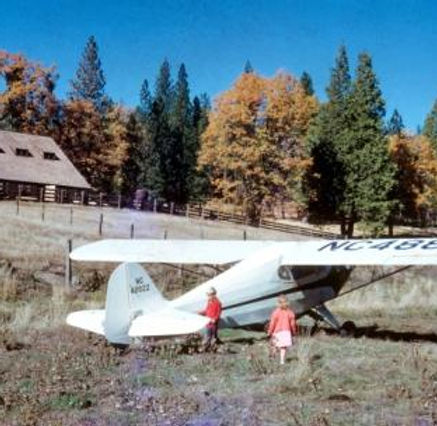
History of Fly-In Acres:
A High-Flying Adventure in Calaveras County
Imagine a place where planes glide over a wide meadow, cattle roam freely, and a sparkling lake mirrors the dreams of vacationers. This is the story of Fly-In, a unique spot in Calaveras County that transformed from a cattle ranch into a haven for pilots and nature lovers.
From Cattle to Cabins: The Early Days
Fly-In Acres began as part of the Cattle Company’s extensive land. The Bonfilio family, ranchers from Valley Springs, later acquired it to graze their cattle in the summer and enjoy it as a vacation retreat Eventually, a man named Mr. Brown bought the land, paving way for something extraordinary. Fast forward to the post-World War II era: Travis Bailey, an enthusiastic aviator, had launched a flying school at Stockton Air Field alongside his brother and a partner. One of his students? Mr. Brown, who had a bold idea about his 1,680 acres in Calaveras.












